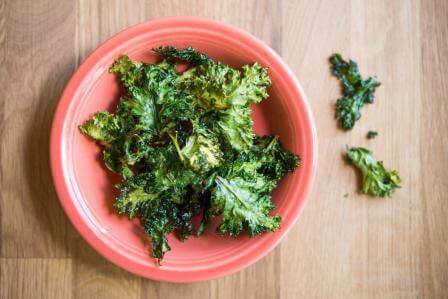Which Nutritional Trade-Offs Are Worth It?
When a food has both good and bad points, how do you decide which are more important?
Monica Reinagel, MS, LD/N, CNS
Listen
Which Nutritional Trade-Offs Are Worth It?

For example, I got an email this week from a woman who was in a quandary over vegetable juice. On the one hand, she had read that nutrients are better absorbed from juice than they are from whole foods. On the other hand, because juicing removes most of the fiber from the vegetables, the natural sugars in vegetable juice are much more quickly absorbed, and this could potentially cause a blood sugar spike.
See also: Juicing: Healthy Habit or Blood Sugar Bomb?
What a pickle! Actually, not really. Let’s look a little more closely at the details.
Let’s say you’ve got a glass of fresh carrot juice. That’s a whopping 45,000 International Units of vitamin A, which is a nine-day supply. However, the sugars in carrot juice are absorbed into your bloodstream very quickly. And when it comes to blood sugar, slower is usually better.
In my episode on juicing, I suggested consuming juice together with higher fiber foods as a way to slow down the absorption of those sugars. Now it’s true that the fiber might reduce your absorption of the vitamin A by as much as 40%. But because there is so much in there to begin with, you’d still be absorbing five day’s worth of vitamin A in a single shot. Even 60% of that much beta-carotene is still a heck of a lot of beta-carotene. And when I think of all the other benefits of fiber, everything from promoting digestive health to feeding the beneficial bacteria in my gut, that’s a trade off I’m happy to make.
Here’s another example of a nutrition trade off that’s worth making.. A couple of years ago, I was invited to speak about nutrition to a parent’s group at a local school. At one point, I asked if there were questions and an attractive young mom raised her hand.
She told us that she’d started making homemade kale chips and, to her surprise and delight, her kids absolutely loved them. Baked kale chips had become their favorite after school snack. They begged for them.
But then she’d read that heat destroys nutrients, so now she was worried that she wasn’t doing her kids any favors because she was cooking all of the nutrition out of the kale.
Now let’s just back up the lens for a moment. This woman’s children were coming home after school and begging for kale chips. Is there really a problem here?
Kale is a very nutrient-dense food. Even if some of those nutrients being were reduced by half (which is unlikely), every serving of baked kale chips is still providing a whopping helping of vegetable nutrition. Plus what’s the alternative? Something tells me that a big bowl of raw kale leaves isn’t going to go over quite as well. I think this is another nutritional trade-off that we can well afford to make!
In general, I think people are way too worried about cooking the nutrition out of their vegetables. If you are cooking vegetables, that suggests that you are actually eating vegetables—so I am not worried about a few milligrams of vitamin C being lost in the process.
I think people are way too worried about cooking the nutrition out of their vegetables.
Some nutrition trade-offs—such as the two examples I’ve given here—are easily resolved because there’s a big difference in the relative impact of the two sides of the trade-off. When the trade-off is between two things of more equal weight, it gets a little trickier. In those cases, it often comes down to your personal situation and goals.
Let’s say you have to choose between a black bean soup that’s high in fiber but also high in sodium and a chicken noodle soup that’s low in sodium but also low in fiber. If you have high blood pressure, you might decide to sacrifice the fiber and go with the chicken noodle. If you have normal blood pressure and don’t need to restrict sodium, the black bean soup might be a better choice for you. And of course, it’s sometimes possible to find a third option which avoids the tradeoff entirely—such as a lower sodium bean soup.
See also: Sodium Vs. Saturated Fat: Which is Worse?
Do you find yourself with a nutrition dilemma? Wondering whether a particular trade-off is worth it? Send me an email or post your question on the Nutrition Diva Facebook page and we’ll figure it out together.
Image courtesy of Shutterstock.

